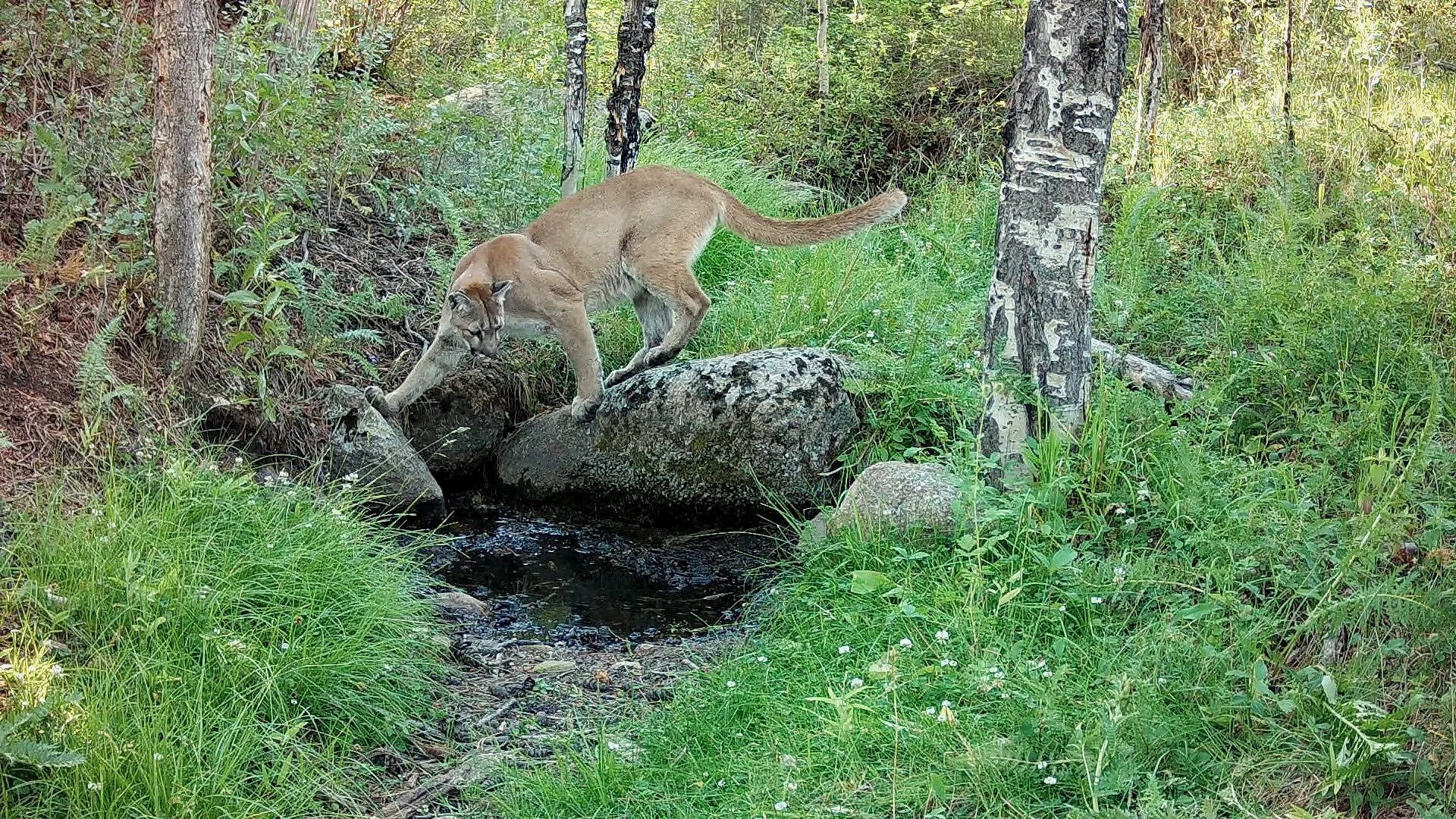The Value of Wild
Female mountain lion getting a drink at a remote mountain spring. This place is frequented by deer, elk, moose and black bear to graze the green grass and forbs. But it is never overgrazed as the mountain lion, a keystone species, keeps these animals on the move. As a keystone species, the mountain lion has an outsized impact on maximizing the health of riparian areas.
There’s a rhythm, a perfect metronome in wild places that can’t be found anywhere else. Wild places are not just scenic backdrops for recreation; they are living, breathing systems that support us in every way imaginable—clean water, clean air, healthy soil, and a deep sense of belonging that no city skyline can replicate. Nature is always striving for harmony, something rarely found in man made environments. Maybe this is why millions of people flock to our national parks and monuments each year. These ecosystem treasures look and feel different from a typical neighborhood or monoculture farmstead.
At the heart of many of these ecosystems, particularly in the American West, is a species that few people see but whose influence is undeniable: the mountain lion. As a keystone predator, mountain lions shape the behavior of deer, elk, moose, and even black bear. By simply existing on the landscape, they push these herbivores and omnivores to stay alert and on the move, preventing them from overgrazing the most sensitive areas—riparian corridors, young forests, and high-elevation meadows. These places, often the green arteries of any ecosystem, where water is filtered, birds and fish thrive, and biodiversity explodes. Without the presence of a top predator like the lion, these habitats degrade quickly and with them, everything that depends on them—including us. Beavers are also a top keystone species that have an outsized positive impact on riparian areas.
You can see it on the ground: the difference between a riverbank that has been hammered by sedentary grazers and one where predators keep these animals moving is stark. The healthy banks have willows and aspen regenerating, beaver dams holding water on the land, birds nesting, and insects buzzing in the understory. The water runs clearer and cooler. The soil holds stronger. All of this is amplified by the presence of the mountain lion, who, without a word or footprint we’re likely to see, orchestrates this balance simply through the natural rhythm of hunt and movement. It's predator-prey dynamics 101, and it works—if we let it.
Our benefit from this goes far beyond water quality or scenic value. There’s a part of our DNA that still resonates with the call of the wild, a strand of ancestral memory that understands we need these places not only to survive, but to feel deep peace. We are hardwired for connection to the wild world. When we lose wild places or strip them of their keystone species, we lose a piece of ourselves. It is a disconnection we often can’t articulate, but one we feel in our bones—in the anxiety of crowded cities, in the longing for open skies, and in the quiet ache we carry when the wild grows distant.
This is why protecting wild places is not a luxury—it’s a necessity. Who we vote for matters. And it’s why respecting and understanding the role of species like the mountain lion is critical to ecosystem health and to our own future. Let the lion roam, let the deer, elk, moose and bear stay wary, let the streams run wild and clean. In doing so, we protect more than land. We protect the very rhythm that makes us feel alive.
